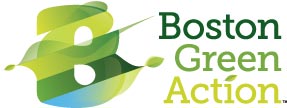Writing in The Washington Post (April 23, 2025), climate scientist Niko Kommenda shares the results of computer modeling to answer the question: How green is your city?
Some key excerpts from the article and interactive map:
“,,,Researchers at the Arbor Day Foundation, the U.S. Forest Service and forestry consultancy PlanIT Geo have mapped tree cover across all urban areas in the country using aerial imagery and artificial intelligence. Their computer model analyzes patterns in color, shape or shadowing to detect tree crowns.
…Climate is not the only limiting factor for vegetation. Bigger, more densely populated cities need somewhere to put all of their homes, businesses and roads, so they end up with less space to plant trees.
…Planting more trees in a crowded city, however, can pose a challenge. Making room for nature means there’s less space for housing and transportation.
’Density has a lot of benefits,’ said Rob McDonald, lead scientist at the Nature Conservancy, an advocacy group. ’It makes our cities generally lower-carbon as we use less energy, especially for transportation.’
On the other side of that equation are the health benefits urban trees offer — or the risks of not having them. On a hot summer day, afternoon temperatures in treeless neighborhoods tend to be 8 to 11 degrees higher than in the greenest parts of the same city, said Vivek Shandas, professor of urban sustainability at Portland State University.
Unshaded buildings and roads also keep releasing heat long after the sun has gone down. Researchers say that heat waves damage our bodies much more if they’re not broken up by cool nights.
Measuring heat at the neighborhood level is trickier than it may sound. Many studies use satellite readings that capture surface warmth — on asphalt, roofs or treetops. But these statistics don’t always reflect what we actually feel as we move through the city.”
Here’s Boston’s tree data:



